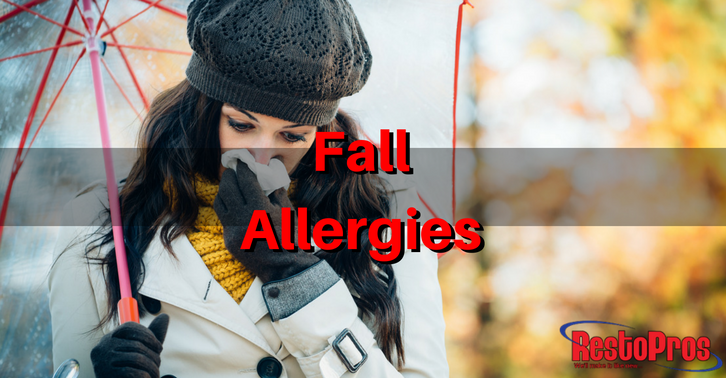 People deal with allergies and allergy-like symptoms year-round. But for many of us, Fall is when the harshest allergies seem to make their strongest attack. When certain agents (pollen, dander, mold spores, etc) are inhaled or come into contact with the skin, the body can produce histamines which react in the form of swelling, rashes, or inflammation in the sinuses (among other symptoms). Histamine blocking medicines are usually called upon to stop this, but there are other ways to deal with your fall allergies, staying away from allergens in the first place.
People deal with allergies and allergy-like symptoms year-round. But for many of us, Fall is when the harshest allergies seem to make their strongest attack. When certain agents (pollen, dander, mold spores, etc) are inhaled or come into contact with the skin, the body can produce histamines which react in the form of swelling, rashes, or inflammation in the sinuses (among other symptoms). Histamine blocking medicines are usually called upon to stop this, but there are other ways to deal with your fall allergies, staying away from allergens in the first place.
Source of Fall Allergies
The worst allergies are triggered by a plant commonly known as ragweed. Pollen from any plant can induce an allergic reaction or even a simple sneezing fit, but ragweed is extremely potent. Its pollen can travel for hundreds of miles and is spread across large portions of the nation. If it’s early fall and you’re having sinus trouble, ragweed is a likely suspect.
But ragweed and pollinating trees are not the only source of mild to severe allergies in the fall. Mold spores, which can lodge themselves in sinus passages or your lungs, are another source of allergic reactions, sinus irritation, and breathing difficulty during the fall. These spores aren’t just from mold growing in your home either. There’s an increase in mold spores during the fall due to fallen leaves, dead grass, and other decaying vegetation.
Mold is part of the Earth’s natural process for breaking down biomass. As plants enter their dormancy period, large quantities of vegetation are left to be broken down by microbes and mold. That fancy landscaping job you have around your home may be great during the spring and summer, but during the fall you’re likely to run into allergy issues from pollen and mold spores.
How to Fight Mold Allergens
In short, keep mold spores outside. Taking a proactive approach to dealing with spores is the best way to prevent allergy attacks throughout the fall season.
- Remove jackets as soon as you enter the home to keep from tracking mold spores throughout the home
- Wear a mask while raking leaves, mowing the lawn, or doing yard work (and change clothes as soon as you’re done)
- Have a HEPA filter installed in your home to filter out the worst contaminants
- Vacuum floors, upholstery, and curtains regularly during the fall
- Watch the weather for high pollen and mold counts, and keep the windows closed on high-count days
- Air out your home on days when the pollen and mold count is low
- Use a dehumidifier to dry out the air, limiting potential mold growth
If you’ve tried all of these things, then there’s a chance the problem is hiding somewhere inside your home. Take a look around for common trouble spots or signs of places mold could be hiding. If you haven’t found anything and are still worried that there may be an infestation, call a professional to inspect your home. Mold is no joke. It’s hazardous to your health and can lead to damages that are expensive to repair if left unchecked. Even a small infestation can be a huge irritation. It’s better to spend a little to find a small infestation than to wait until the damage becomes visible and expensive.
Don’t forget to follow RestoPros on Facebook, Twitter, LinkedIn, and Google+ for new Updates, News, and Discounts!
